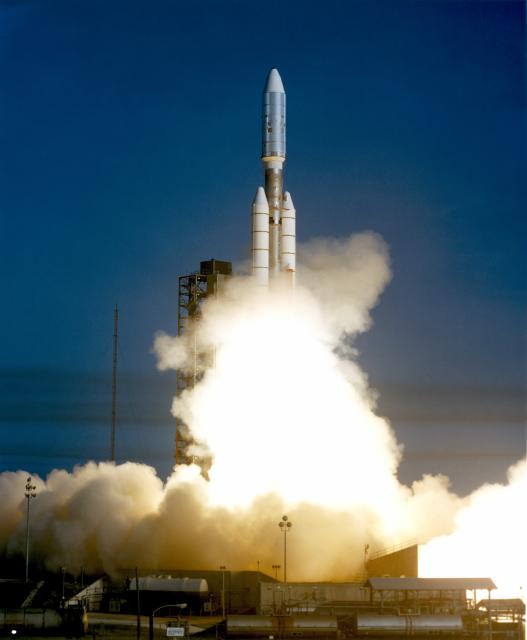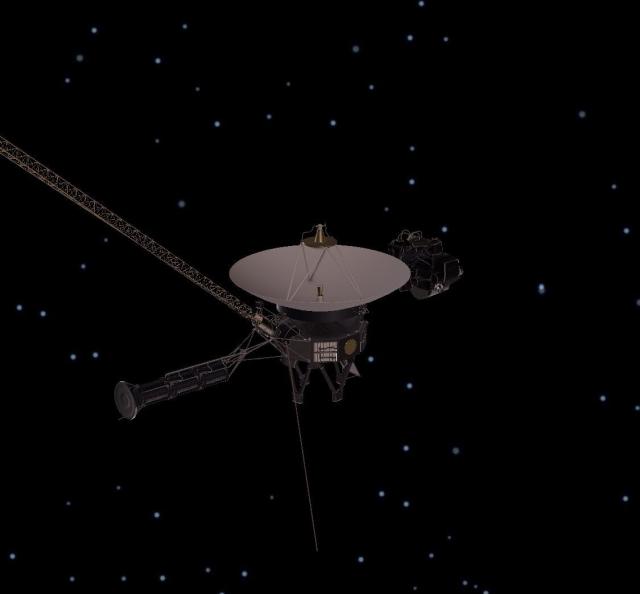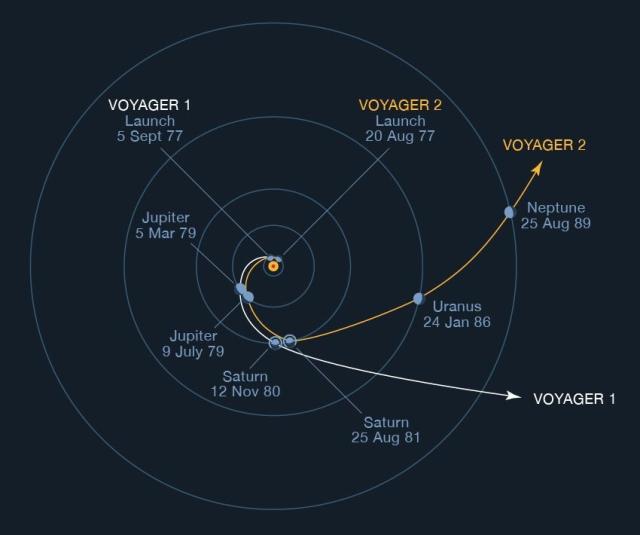The Voyager 1 space probe was launched from Cape Canaveral #OTD in 1977, a few weeks after Voyager 2.
Now it's the most distant human-made object – about 14.96 billion miles from Earth, racing away from us at 38,000 miles per hour with respect to the Sun.
Images: NASA/KSC/JPL



Robert McNees
in reply to Robert McNees • • •Voyager 1’s outbound trajectory took it by Jupiter in 1979, then past Saturn the next year.
This time lapse of the Jupiter approach consists of 66 frames, take once per Jovian day. Look carefully for moons darting past, shadows flickering across the face of the planet.
Credit: NASA/JPL
Robert McNees
in reply to Robert McNees • • •Voyager 1 discovered three new moons (Prometheus, Pandora, and Atlas) shepherding Saturn's A- and F-rings.
It also uncovered a wealth of new information about basic properties of Saturn's moon Titan, from size to atmospheric composition.
Image: NASA/JPL-Caltech
Robert McNees
in reply to Robert McNees • • •The trajectory that gave Voyager 1 the best view of Titan (a mission priority) sent it out of the ecliptic and towards interstellar space.
Ten years later, in 1990, Carl Sagan suggested that the probe should point its camera back at the solar system for a family portrait.
The sixty frame mosaic captured by Voyager 1 on Valentine's Day of 1990 shows Jupiter, Earth, Venus, Saturn, Uranus, and Neptune.
voyager.jpl.nasa.gov/galleries…
Image: NASA/JPL-Caltech
Voyager - Solar System Portrait
voyager.jpl.nasa.govRobert McNees
in reply to Robert McNees • • •The frame containing Earth shows a dramatic optical artifact because we are near the Sun in the camera's field of view.
That's the Pale Blue Dot. Suspended in a sunbeam, captured from a distance of 40 AU by a probe out on the edge of darkness.
After that, mission scientists turned off Voyager 1's cameras to save power.
Image: NASA/JPL
Robert McNees
in reply to Robert McNees • • •By 1998, Voyager 1 was at 68 AU, further out than Pioneer 10.
Around 2004, at about 94 AU from the Sun, it crossed the termination shock and entered the heliosheath.
And in 2012, at 121 AU from the Sun, Voyager 1 crossed the heliopause and entered interstellar space.
Robert McNees
in reply to Robert McNees • • •But Voyager 1 hasn't left the solar system. At 161 AU, its current distance from the Sun is a fraction of Sedna's 936 AU aphelion (though it is currently further out than the minor planet).
And it's nowhere near the inner edge of the Oort cloud, thousands of AU from the sun.
This chart shows Voyager 1's location in 2013, with distance from the sun plotted on a log scale. It is at roughly the same place today, since the next step on the scale jumps from 100 to 1000 AU.
Image: NASA/JPL-Caltech
Robert McNees
in reply to Robert McNees • • •So even though Voyager 1 has a long way to go, I wouldn't fault anyone for describing it as being at "the edge of the solar system."
It’s the fastest and most distant thing humans have ever made, it’s okay to sound a little dramatic.
Robert McNees
in reply to Robert McNees • • •When we receive data from Voyager 1, we’re picking up a signal sent about 22 hours and 19 minutes.
Of all the objects humans have hurled into space, Voyager 1 is the closest to being one full light-day away from us.
The speed of light is 3 x 10⁸ m/s, and Voyager 1 is traveling at about 38,000 mph with respect to the Sun. A few conversions turns that into about 0.5 light-hours per year. So we're a little over three years away from Voyager 1 being one full light-day away from us.